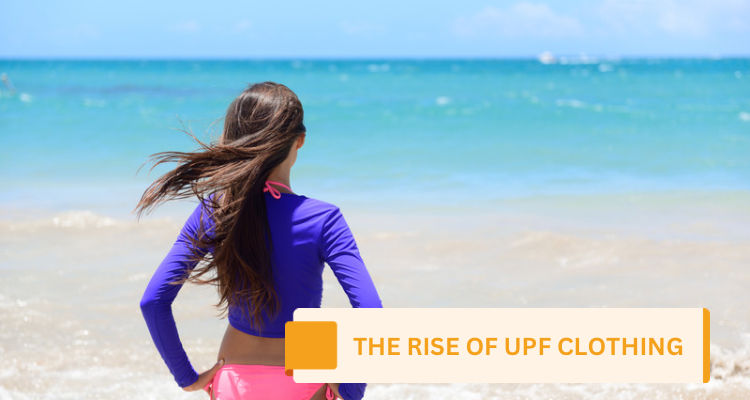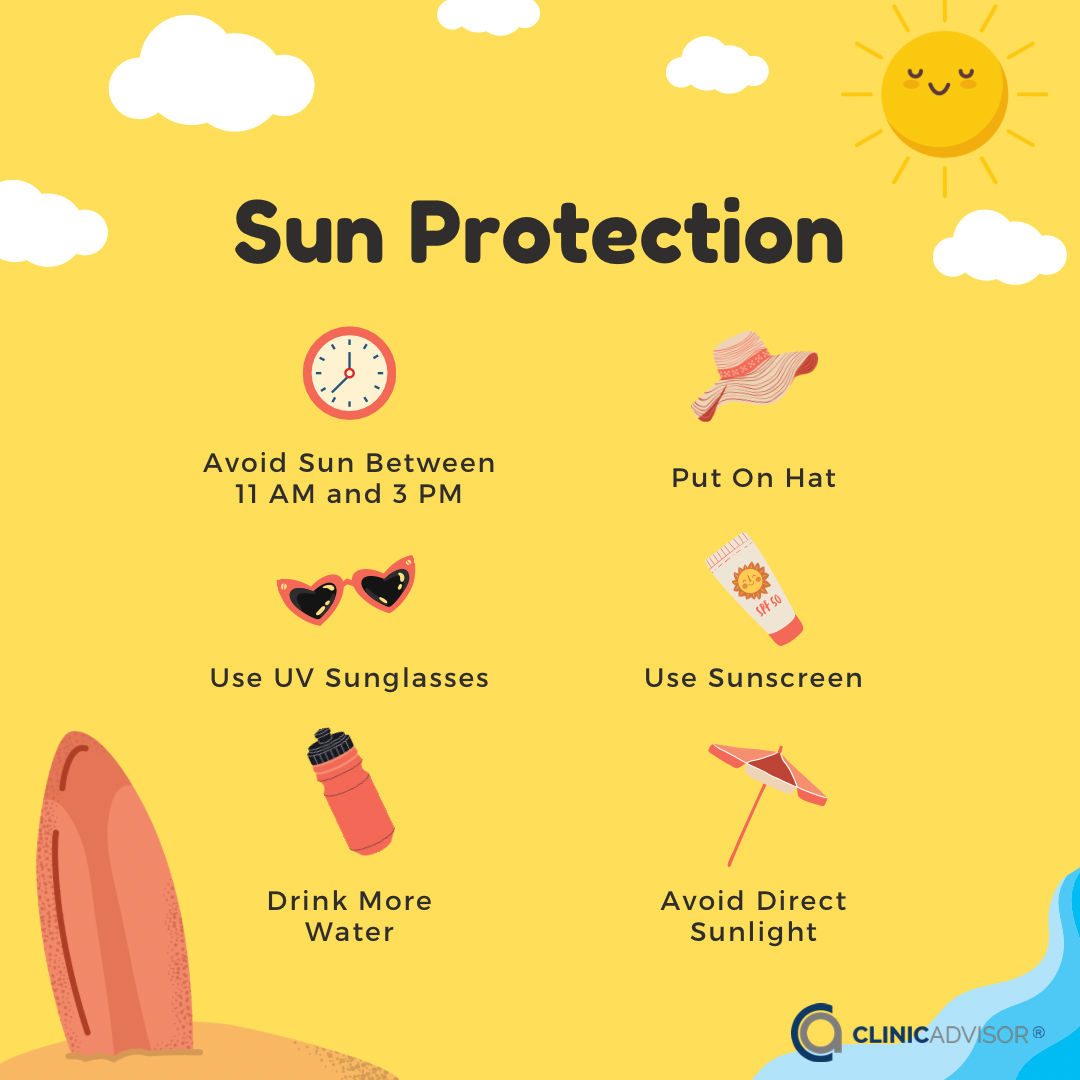As awareness of skin health grows, so does the popularity of UPF clothing.
In an era where information is readily accessible, and health-conscious individuals are taking proactive measures to protect themselves from UV rays, the rise of sun-protective clothing, often referred to as UPF clothing, is becoming a significant trend. Sun-protective clothing is no longer just for those with sun sensitivity or skin conditions; it is a stylish and practical choice for anyone looking to safeguard their skin from sun damage and potentially skin cancer.
What is UPF Clothing?
UPF stands for "Ultraviolet Protection Factor," and it's a rating system used by manufacturers to measure the effectiveness of fabric in blocking out the sun's harmful ultraviolet (UV) radiation. Much like the SPF (Sun Protection Factor) rating used in sunscreens, UPF indicates how well a piece of clothing can shield your skin from UV radiation. The higher the UPF rating, the better the protection it offers. UPF clothing is specially designed and treated to provide this protection. For example, clothing with a UPF 40 factor allows 1/40th of UV rays to pass through. This means that with this garment, the skin will take 40 times longer to redden or burn than if uncovered.
The UV protection factor (UPF) is the ratio of unprotected erythemal effectiveness to protected erythemal effectiveness. UPF values depend on UVB transmission.
What is the UPF Rating Scale?
| UPF Rating | Protection Category | % UV Radiation Blocked |
| A UPF of 15 to 25 | Good protection | Blocks at least 93% |
| UPF rating of 25 to 40 | Very good protection | Blocks at least 96% |
| UPF 50 + clothing (maximum protection) | Excellent protection | Blocks at least 98% |
Note: The UPF index is not mandatory for all clothing, but reputable manufacturers of UV-protective clothing typically provide this information to help consumers make informed choices about the level of sun protection they need.
UPF 30
When it comes to choosing UV protection clothing, the sun protection factor (UPF) plays a crucial role. A UPF 30 indicates that the fabric of these garments helps block approximately 97% of the sun's harmful ultraviolet rays. This means that only 1/30th of UV rays can pass through the fabric, providing effective sun protection. Clothing with a UPF 30 rating is recommended for everyday use, providing reasonable protection against the damaging effects of the sun while ensuring optimal comfort.
UPF 50
For maximum sun protection, clothing with a UPF 50 rating is the ideal solution. With the ability to block approximately 98% of UV rays, these garments provide a superior barrier against the harmful effects of the sun. Opting for UV protection clothing with UPF 50 is particularly crucial in conditions where exposure to the sun is intense, such as a day at the beach or skiing in the mountains.
This category of clothing offers optimal protection, significantly reducing the risk of sunburn, premature skin aging, and UV-related health problems.
Incorporating UV protective clothing with UPF 30 and UPF 50 ratings into your wardrobe provides a full range of options, helping to meet specific sun protection needs based on activity and environment.
How to choose the right UPF fabric for the best sun protection?
Selecting the right UPF fabric for your sun protection garments is crucial and depends on the specific activity and intensity of use. While a casual cotton shirt might suffice for a leisurely afternoon under a parasol, more robust protection is necessary for outdoor activities. Here are key factors to consider when choosing UPF fabrics:
- Weave Density:
Opt for fabrics with a tight weave or knit pattern, as they create a denser barrier against UV rays. This contributes significantly to the overall sun protection offered by the garment. - UPF Rating:
Check the UPF rating of the fabric, which indicates its level of ultraviolet protection. Aim for fabrics with higher UPF ratings, preferably UPF 50+, for maximum sun protection. - Color Considerations:
Keep in mind that darker colors generally provide better UV protection than lighter ones. Some fabrics are treated with UV-absorbing dyes, offering enhanced protection regardless of color. - Moisture-Wicking Properties:
Prioritize fabrics with moisture-wicking properties, especially for outdoor activities. These materials draw moisture away from the skin, ensuring a dry and comfortable experience during prolonged sun exposure. - Ventilation:
For activities inducing sweating, consider fabrics with ventilation features like mesh panels or breathable weaves. Improved airflow enhances overall comfort, particularly in warmer conditions. - Durability and Maintenance:
Factor in the durability and maintenance of the chosen fabrics. Some synthetic materials, such as polyester and nylon, are known for their resistance to wear and tear. Be aware of any specific care instructions to ensure the longevity of your UPF clothing. - Certifications:
Look for certifications, such as the Skin Cancer Foundation's Seal of Recommendation. This seal assures that the product has undergone independent testing and meets stringent criteria for effective UV protection.
Now, let's keep in mind these considerations as we explore various UPF fabrics suitable for different activities:
Fabric Type | Features |
| Polyester | Stretchable, keeps the body dry by evacuating moisture. Virtually wrinkle-free and color-retentive. |
| Nylon/Polyamide: |
|
| Tencel (aka Lyocell) |
|
| Bamboo |
|
| Lycra (Spandex) |
|
Supplex | Cotton-like feel, faster drying, better breathability, and color retention. |
Choosing the right UPF fabric ensures that your sun protection clothing not only guards against UV rays effectively but also meets the specific demands of your outdoor activities.
| Tip #1: Quick drying is a key feature in UPF Clothing When fabrics get wet, they can become stretched and may lose some of their density, which affects their ability to block UV rays effectively. Additionally, water itself can absorb and scatter UV radiation, potentially allowing more of it to reach the skin, except for UPF swimwear. |
The Advantages of UPF Clothing
1. Effective UV Protection
UPF clothing offers superior protection against UV radiation compared to regular clothing. While standard clothing can provide some level of protection, UPF clothing is specifically designed to block out UV rays, reducing the risk of skin damage.
2. Lasting Protection
Unlike sunscreen, which needs to be reapplied regularly, UPF clothing provides consistent protection as long as you wear it. There's no need to worry about sweating it off or forgetting to reapply.
3. Versatility and Style
Sun-protective clothing comes in various styles and designs, making it easy for individuals to incorporate it into their everyday wardrobes. From swimwear to hats and everyday clothing, there's a wide range of options to suit different tastes and lifestyles.
4. Ideal for Outdoor Activities
UPF clothing is particularly popular among outdoor enthusiasts. Whether you're hiking, biking, fishing, or simply spending a day at the beach, UPF clothing ensures you can enjoy the outdoors while minimizing the risks associated with UV exposure.
5. Sustainability
Many UPF clothing brands are committed to sustainability, using eco-friendly materials and production processes. This aligns with the growing environmental consciousness of consumers.
Tip #2 Choose the right size for elastic clothing If tight-fitting leggings or t-shirts are too tight, you will stretch the material while wearing them and lower the UPF rating of your garment. |
What are the types of Sun protection clothing?
Sun protection clothing comes in various types and styles, each designed to provide effective protection against harmful ultraviolet (UV) radiation from the sun. Here are some common types of sun protection clothing:
- UPF Shirts and T-Shirts:
These are regular shirts or T-shirts made from fabrics with a high UPF (Ultraviolet Protection Factor) rating. They can be short or long-sleeved and are suitable for various outdoor activities. - Sun Hats:
Wide-brimmed hats or those with neck flaps provide shade to the face, neck, and ears. Some hats are specifically designed with UPF-rated materials to enhance sun protection. - Swimwear:
Sun-protective swimwear is designed for water activities and is made from materials that dry quickly. This includes UPF-rated swimsuits, rash guards, and swim shirts. - Pants and Shorts:
Lightweight pants and shorts made from UPF-rated fabrics offer protection for the legs. Some designs are suitable for outdoor activities like hiking or sports. - Dresses and Skirts:
Sun protection dresses and skirts are available in various styles and lengths, providing coverage while keeping you cool in warm weather. - Jackets and Cover-Ups:
Lightweight jackets, cover-ups, and shawls made from UPF-rated fabrics offer an extra layer of protection without compromising on style. - Gloves and Arm Sleeves:
For additional protection for the hands and arms, there are UPF-rated gloves and arm sleeves that can be worn during outdoor activities. - Accessories:
Accessories like sunglasses with UV protection, UPF-rated umbrellas, and neck gaiters can provide extra coverage for specific areas.
When choosing sun protection clothing, look for items that clearly indicate their UPF rating, and consider the type of activity you'll be engaging in. Keep in mind that while sun protection clothing is essential, it's often recommended to use a combination of protective measures, including sunscreen, hats, and seeking shade, especially at UV Index numbers above 3, for comprehensive sun safety.
What is a UPF swimsuit?
UPF swimwear has a UPF (Ultraviolet Protection Factor) rating and blocks both UVA and UVB rays. A UPF rating of 50 means that the garment allows 1/50th of the sun's rays to pass through. 98% of the rays are therefore stopped. If there is no indication on the label of your swimsuit, it is not a certified UPF swimsuit.
Lycra swimsuits protect against UV rays. Lycra is a synthetic and elastic material whose very tight weave effectively blocks UV rays. It is also a material that is water resistant and dries quickly. You can therefore swim several kilometers without your UPF t-shirt being too heavy!
| Tip #3 Do not wear faded clothes. A bright yellow T-shirt protects against UV rays better than a faded yellow t-shirt. |
How Important is Sun Protection?
The importance of sun protection cannot be overstated. Prolonged exposure to UV radiation from the sun can lead to various skin problems, including sunburn, premature aging, and an increased risk of skin cancer. With rising concerns about skin cancer rates and the harmful effects of UV radiation, people are seeking effective ways to protect themselves from these risks. Sunscreen has long been a go-to solution, but UPF clothing is gaining ground as an alternative or complementary option.
Tips for enhanced sun protection in combination with UPF clothing:• Wear a hat. The wider the brim, the better. Make sure that the ears, neck, and head are adequately shaded. • Apply sunscreen with SPF 50 every two hours to all parts of the body exposed to the sun. • Drink enough (around 2.5 liters of water per day) and seek shade if possible. • Opt for total (100%) UV protection sunglasses. • Also protect yourself in cloudy weather. Sun rays breaking through cloud cover can cause sunburn. |
What is the Future of Sun Protection?
As the awareness of the harmful effects of UV radiation continues to grow, the sun-protective clothing market is expected to expand further. More fashion brands are incorporating UPF technology into their designs, making sun protection a mainstream consideration. This shift is not only about health but also about making sun protection an integral part of everyday life.
In conclusion, the rise of sun-protective clothing is a positive trend that aligns with the increasing importance of skin health. UPF clothing offers an effective and convenient way to protect oneself from the sun's harmful rays while still being fashionable and sustainable. As more people recognize the value of sun protection, the popularity of UPF clothing is likely to continue its upward trajectory, contributing to a healthier and more sun-safe society.




Share Your Opinion, Please